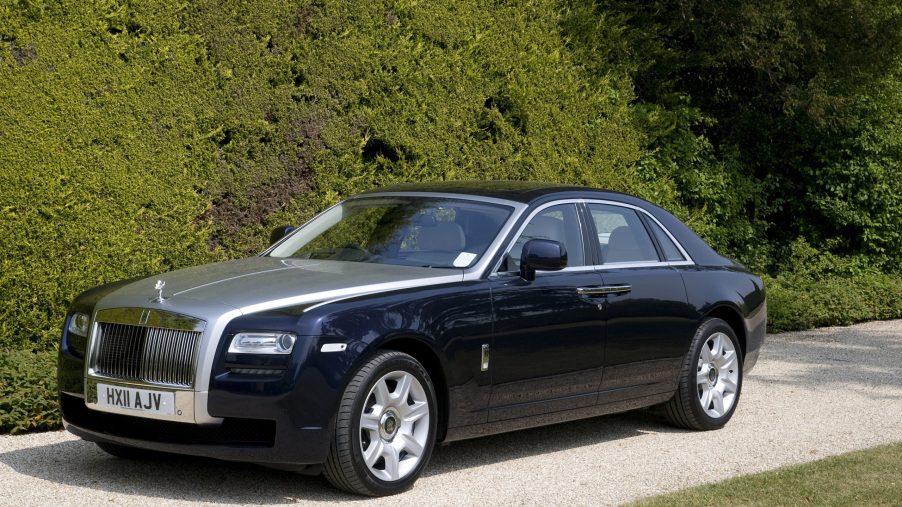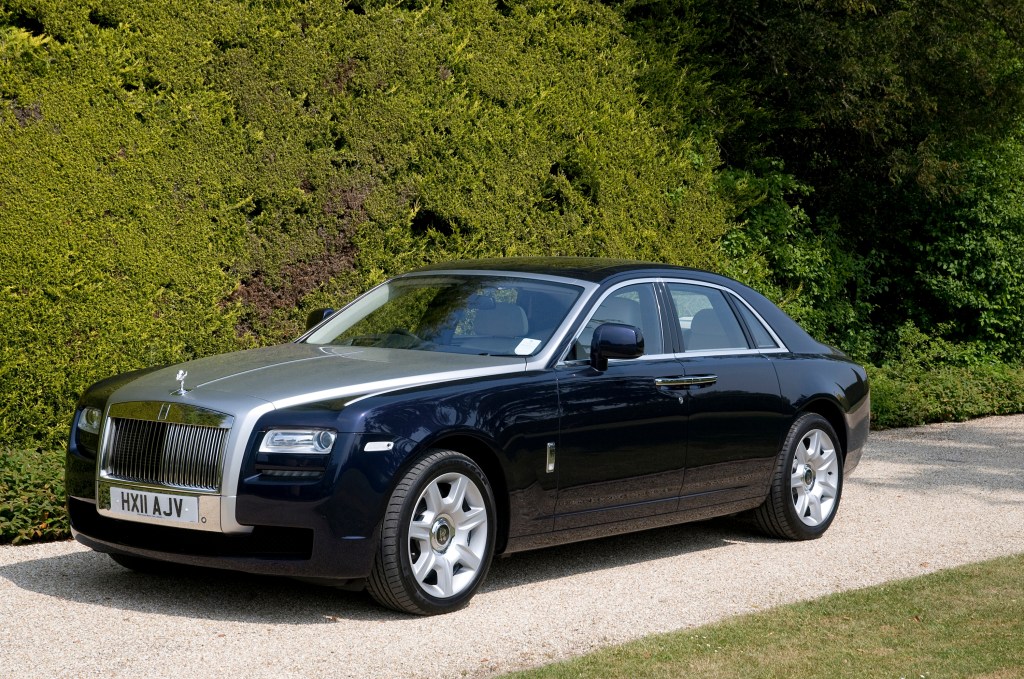
Rolls-Royce Secret: The Ghost Is 20% BMW 7
Rolls-Royce has a secret at the heart of some of its bespoke luxury vehicles. For many years after BMW bought the ultra-luxury brand, a platform was shared between the hand-made super luxury cars and some of BMW’s higher-end offerings. Comparing these two platform siblings highlights exactly what makes a Rolls Royce so special.
Rolls-Royce is the first name in bespoke luxury cars

Each Rolls-Royce is carefully custom ordered to exact specifications. Real metal, wood veneers, and sumptuous leather, and other materials are hand-selected before every build. Buyers can even choose a headliner that resembles the stars in the night sky.
The 2020 Ghost is powered by a 6.6-L V12 that puts out 563hp. The Ghost uses GPS data to inform the satellite-guided gearbox of upcoming road conditions. The massive engine in the Ghost guzzlers gas. The EPA estimates that it gets 12 mpg city and 18 mpg highway.
Acceleration isn’t lacking in this large sedan. It goes from zero to 60 mph in 4.7 seconds. A governor caps its top speed at 155 mph. Technology plays a role in the passenger comforts of the Ghost. The rear-seat theater system features two 9.2-inch screens which allow passengers to control the car’s navigation, radio, and more.
What do a handmade luxury car and a BMW 7 have in common?
The answer is at least 20% of their parts, including the BMW, a shared platform. The 80% pure Rolls-Royce costs bout $200,000 for a multitude of reasons. Each Rolls-Royce is custom-built, taking six months from the day of order until delivery. No less than 60 designers, engineers, and builders invest at least 400 hours per build. Highly customized orders can easily take twice as long to complete.
As of 2020 was the last year that a Rolls-Royce Ghost was built on a BMW platform. The luxury sedan also borrowed the BMW’s controversial iDrive touch controller. The unsightly dial seems out of place in the sumptuous interior of a Rolls-Royce.
The Ghost isn’t the only Rolls Royce built on this platform. The Wraith and Dawn shared it as well. The Ghost moved to a Rolls-Royce platform for the 2021 model year. In 2022 The Wraith will move to the in-house platform as well. The luxury builder announced the Dawn will be discontinued in 2022, replaced with another convertible model that has yet to be announced.
The BMW 7 is a far cry from a Rolls-Royce
The BMW 7 series costs less than 1/3 of the price of a Rolls-Royce Ghost. This attainable luxury sedan starts at $87,445. Critics harped on its interior tech for feeling smarmy. Ironically, some of that same tech is found in the car’s opulent counterpart. Unlike a Rolls-Royce, its interior felt cheaper than it should.
Many felt the 7 failed to stand out from competitors in its class. The M760i is powered by a twin-turbo V12, much like the Ghost. It provides a quiet, smooth and comfortable ride. This model-topping option costs a cool $158,695.
BMW included some creature comforts in this pricey model. Heated front and rear seats are available. A 2021 redesign gave the BMW 7 a larger, more stately front grille, new bumpers, and a flatter hood. The new look adds more character, but the car still feels overpriced.
Where the Rolls-Royce Ghost is a rolling work of handmade art, the BMW feels woefully mass-produced. Both cars share a surprising amount of structure and technology but couldn’t be more different. The striking contrast between the two proves the impact that individual design elements have on the overall quality of a car.


